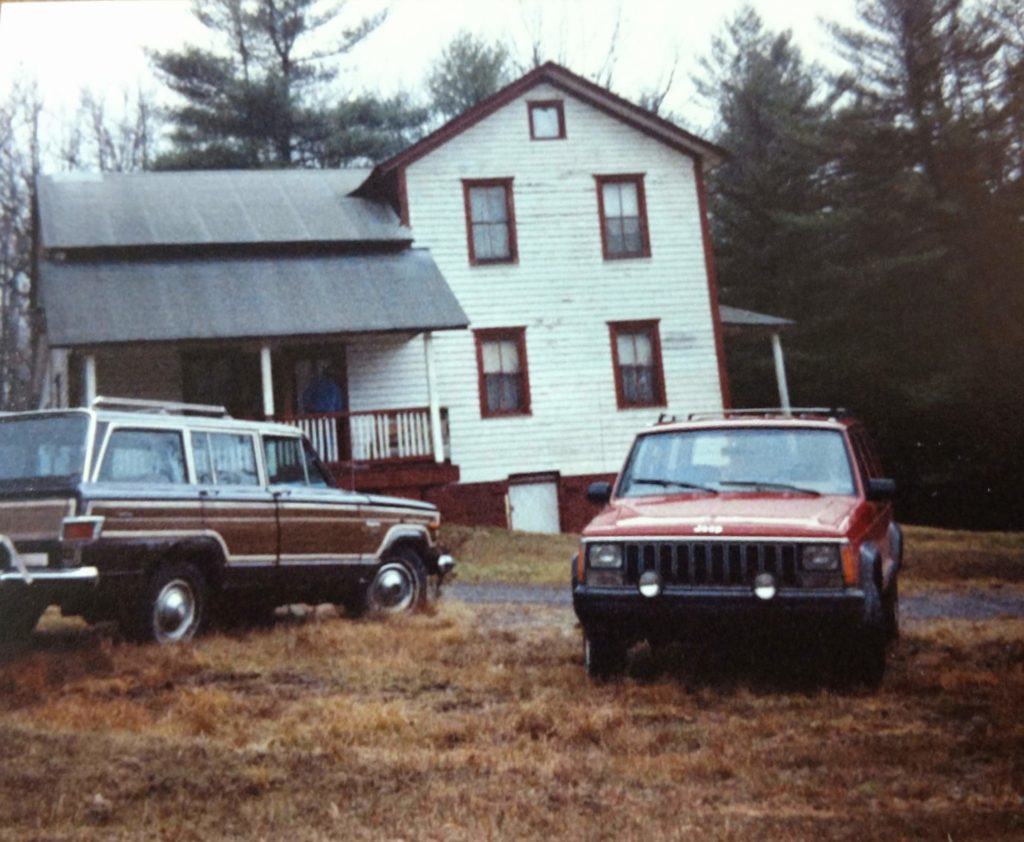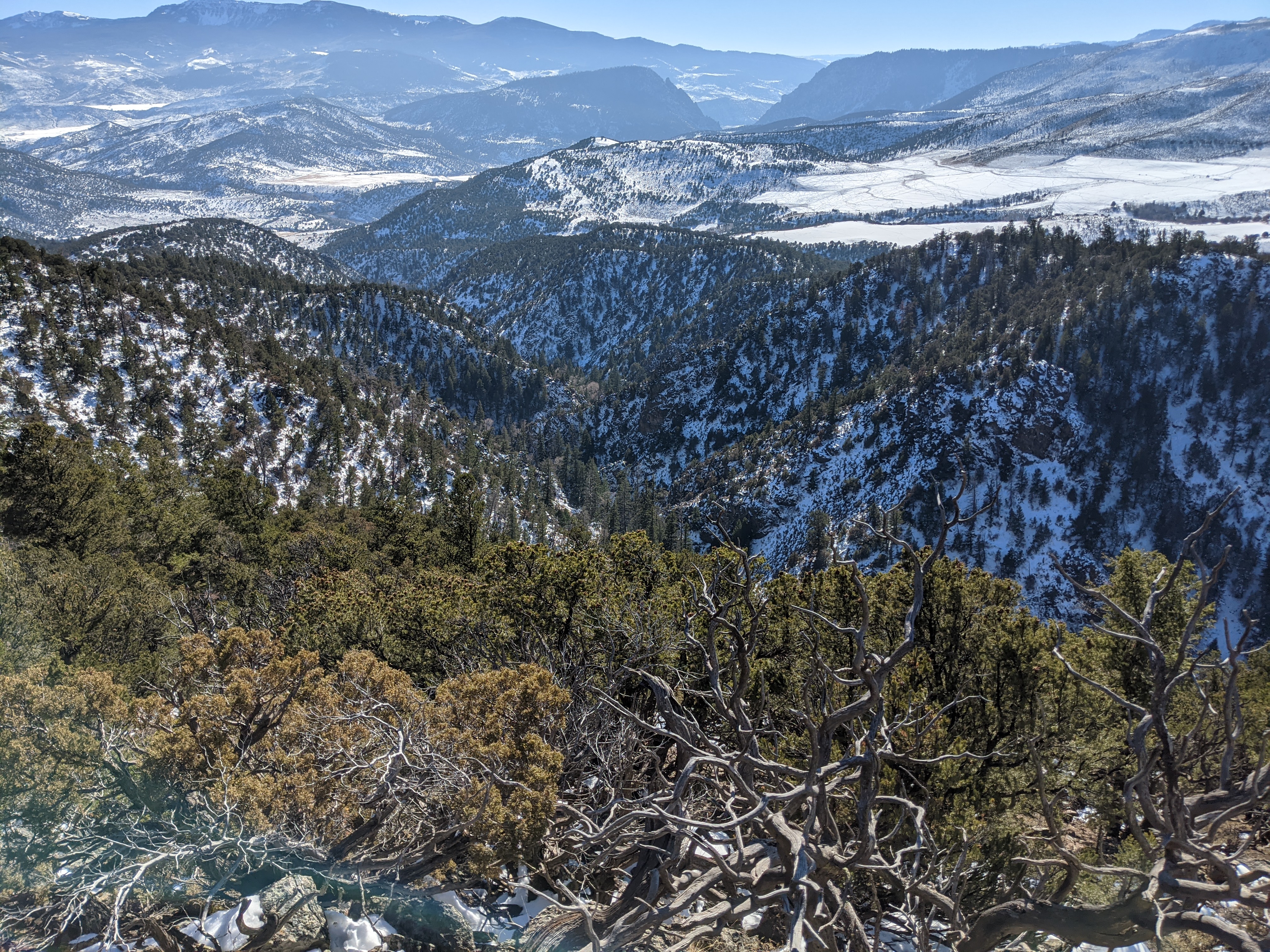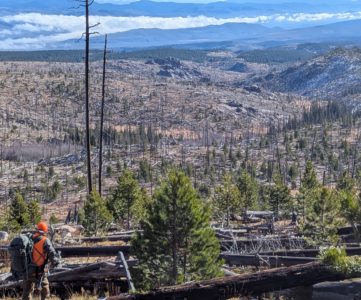I feel like I’m somehow tardy to the party. At some point in my growing up primarily in Western Pennsylvania we all hunted with four wheel drive trucks and SUVs. My dad purchased the Jeep Cherokee the first year of the release of the ‘little Cherokee’ (XJ) in 1983/84 and we’d never really looked back. There was always a capable four wheel drive vehicle in the stable and we generally felt like we could go anywhere and do anything. We never got stuck, or at least stuck in a way that we couldn’t fix the problem ourselves. But, maybe that’s because of the places we went or the times we tried to go there. Items like tire chains never factored into mandatory gear.

To hear my father and older hunting friends talk about their heydays of hunting they always seemed to talk about gnarly weather and blizzards and having to chain up their trucks. Had four wheel drive just advanced that much or had we never pushed ourselves when I was a small kid? Probably a little of both. I’d gone hunting for twenty something years before I ever heard more than a story of chaining up my truck tires.
Laying Down the Law
Then things changed. In 2019 Governor Jared Polis signed a Colorado state bill into law requiring that Commercial Motor Vehicles on Interstate 70 carry tire chains after a certain date during our snow season. Furthermore it required snow rated tires with a specific tread depth and four wheel drive or all wheel drive from September 1st through May 31st for private vehicles. Sudden storms would often cripple the main road through the state grinding the interstate commerce to a halt and causing numerous accidents. All in all this wasn’t a huge surprise, most of this was common sense, but rental companies by the Denver Airport often gave fly-in skiers the absolute worst cars available for the conditions.
So rather than being underprepared I decided to overprepare. My 2020 Gladiator still had some room under the rear seat to stow gear, so I decided having a set or two of tire chains wouldn’t hurt. I was already running 33″ tires with heavy sidewall siping and nice tread depth, but in some instances like ice, chains would help immensely. I looked around for options that were easy to install and cost effective and settled on the Peerless Auto-Trac tire chains. For around $90 a pair I threw them in the truck and didn’t think anything more about them.
Change in Tactics
Then came the 2020 hunting season. Coronavirus cancelled some of my trips and not others, wildfires made over the counter elk hunting difficult, and unpredictable weather caused us yet again to scuttle camp. We left our original backcountry camp with snow falling and temperatures miserable. While the weather was bound to improve there was still a burn ban that didn’t allow us to run our tent stove bought specifically for the reason of keeping us warm. We went home and resolved to get back out later in the week.
After having picked a spot on the map to do some more hunting, the weather wasn’t going to get any better. I eyed the map, and I could either come in through a river valley with extremely steep sides, going down one side, crossing the river, and coming up the other side — or drive some 12 miles on unimproved dirt roads in unknown conditions to my new hunting grounds. I chose the long way.

The first day I went solo, and it was rough. Weather had been yo-yoing between subfreezing temperatures and sun that would easily give you sun burn. There was ice, slush, and slop all over the roads that were just wide enough to run a skidder over. Popping the truck into four low was more than enough torque to get me where I needed to go, but I nearly pinched it sideways on more than one occasion. Passing trucks was a sphincter puckering event, as I was the smallest truck on the trail. That meant everyone else, for some reason was a 3500 dually towing a trailer on a skidder road! It was a tense, but doable day. I didn’t need tire chains to get back into that area, but they certainly would have added a confidence. Until I decided to leave.
The trip out that first night started over an hour before dark. I knew the roads had been sloppy, and with the freeze coming yet again as the sun went down I knew it was going to be rough yet again. I hiked back to my truck, fired it up and decided to take the “short” way back to the main road. A dirt road carved into a cliff side had been slathered with mud and snow, rounded edges on the sides I dared not go near for fear of slipping off the road and into the valley below. I’m not afraid of heights, but perhaps I should be. When I looked out of my drivers side window in a couple of areas, all I saw was the valley floor below, way, way below me.
Chaining Up
Traction on that stuff, solo or with your hunting partners matters. I’d carried tire chains for a year and never used them, but the harrowing journey on backcountry roads that day changed my mind. The next day while a pair of Iowa boys in their white pickup looked on, I struggled to affix chains to all four tires. I’ll be honest, I hadn’t read the instructions, but it seemed self explanatory enough. The white pickup whizzed by us with a halfhearted two finger wave from the steering wheel.
I knew what lie ahead of us. Temperatures were well below freezing that Friday morning and traffic was higher with the second weekend hunters trickling back into the mountains. The road was packed down crunchy ice from the thaw-refreeze cycle now, and traction would be a big deal. We came in the “long way” again, but with four chains and four low engaged the crawl had all the traction we needed to feel safe while motoring to our spot.
Traction Control
The difference of chains and no chains on snow and mud is absolutely night and day. When we finally left for the evening I again took the short road after a drawn out story to my hunting partner about how bad it was. Other than the tires getting loaded up with mud, the front hillside had seen it’s share of melt that day. The chains cut through the mud that was otherwise slicking the treads, and we got off the mountain safely. Once we got back to the junction of dirt and hard pack road we hopped out and took the chains off.
Oh, and those Iowa boys in the white pickup? It turns out they chained up too, we never did catch up with them. But we’d leapfrogged them several times throughout the day, and finally they appeared to be driving with confidence and when I glassed them up they too had chained all four tires.
Other than the cleanup back at home, spraying down the chains with the pressure washer and inspecting chain links it was a relatively painless experience. Modern tire chains have retractable tensioners and closures — no more screwing around with elastic that breaks or bolts that can still puncture your tire. For me it’s a no brainer to carry the chains — they’re less for getting me into trouble and more for getting me out of it.










[…] into the area required tire chains and/or brass ones — so we chained up and rode on. I was able to get into the area both Thursday and Friday of the second rifle season. […]